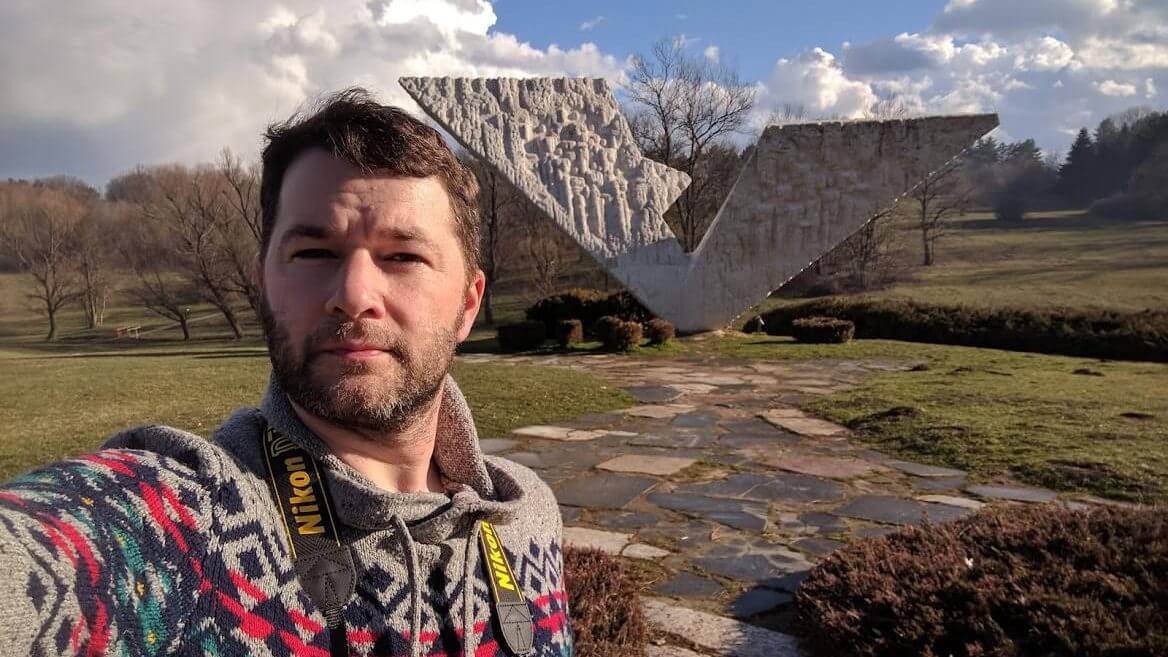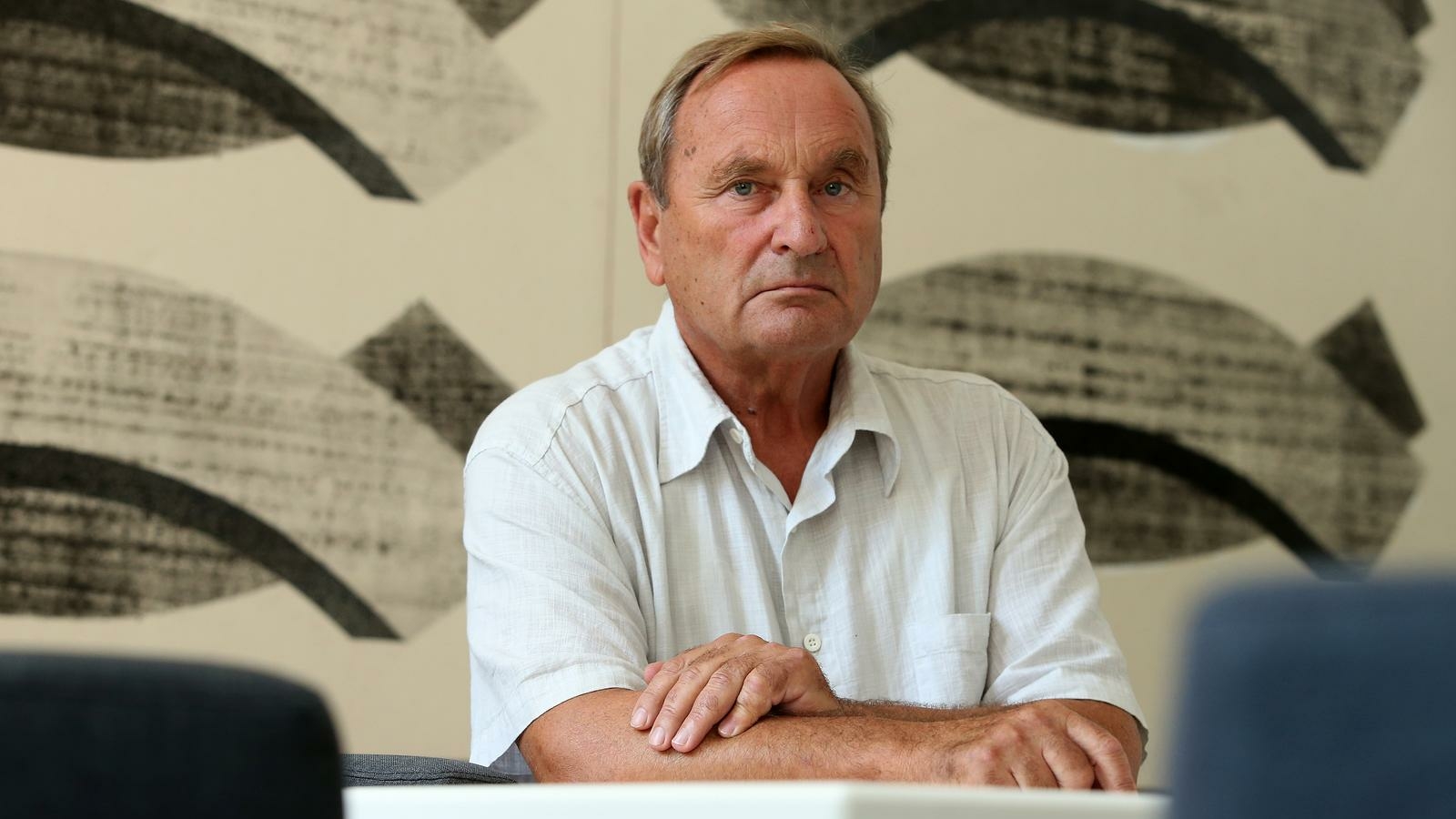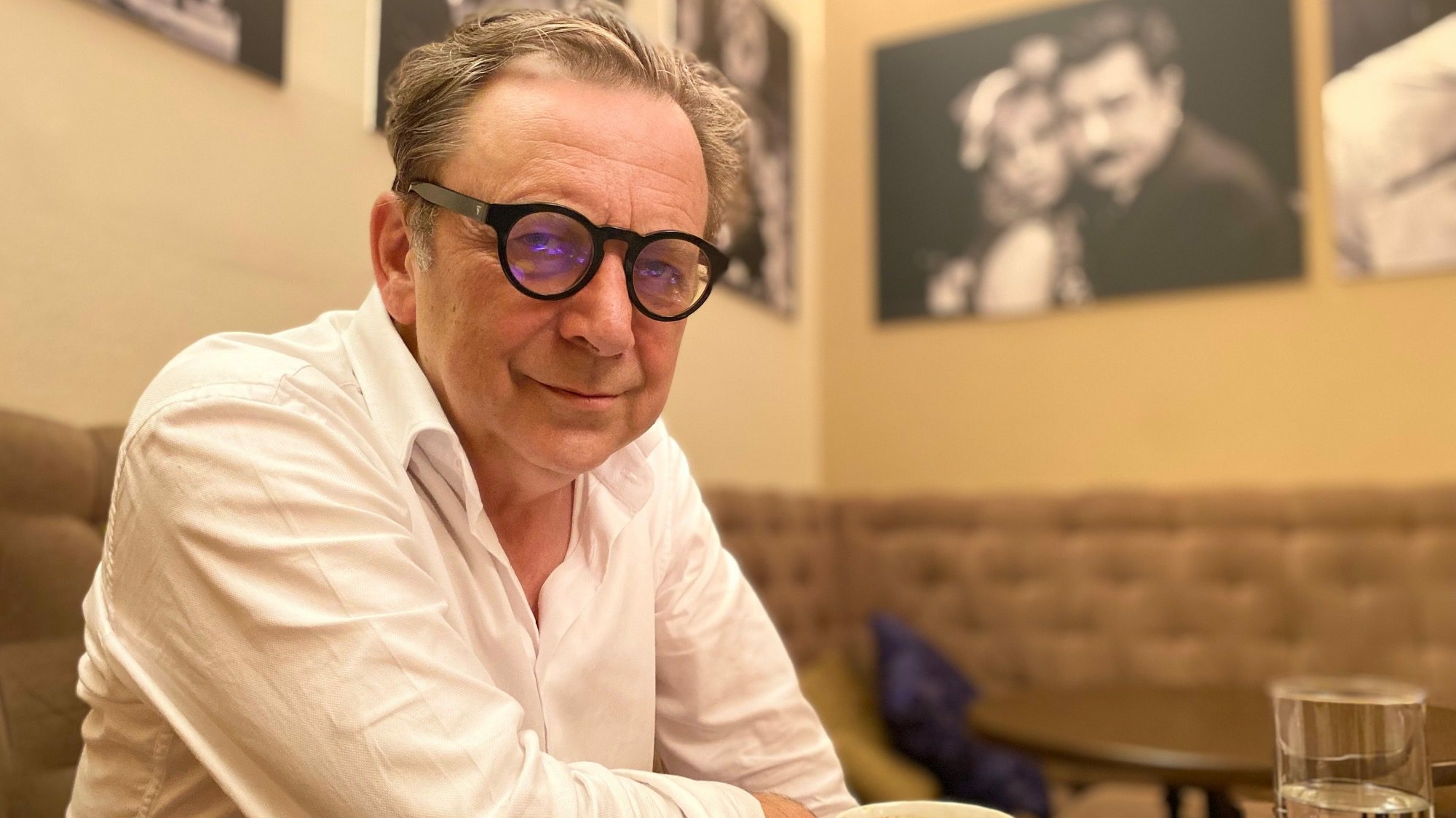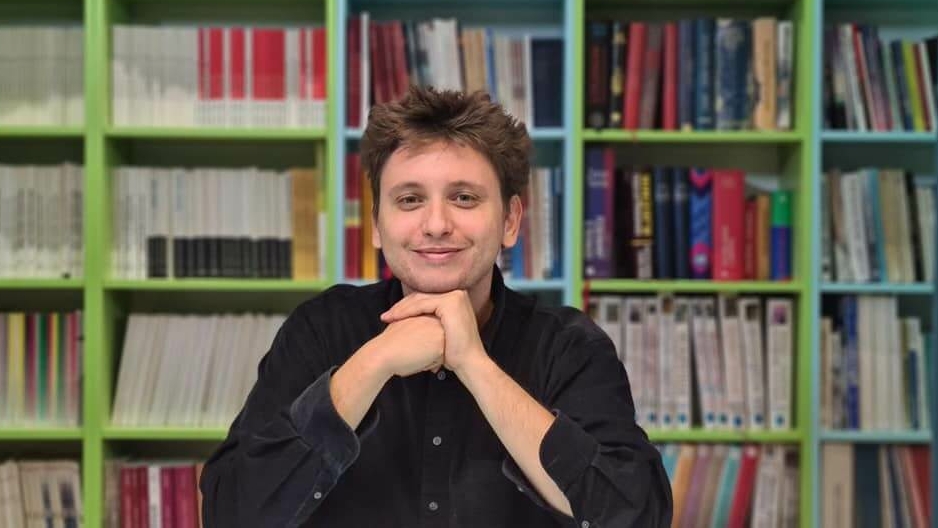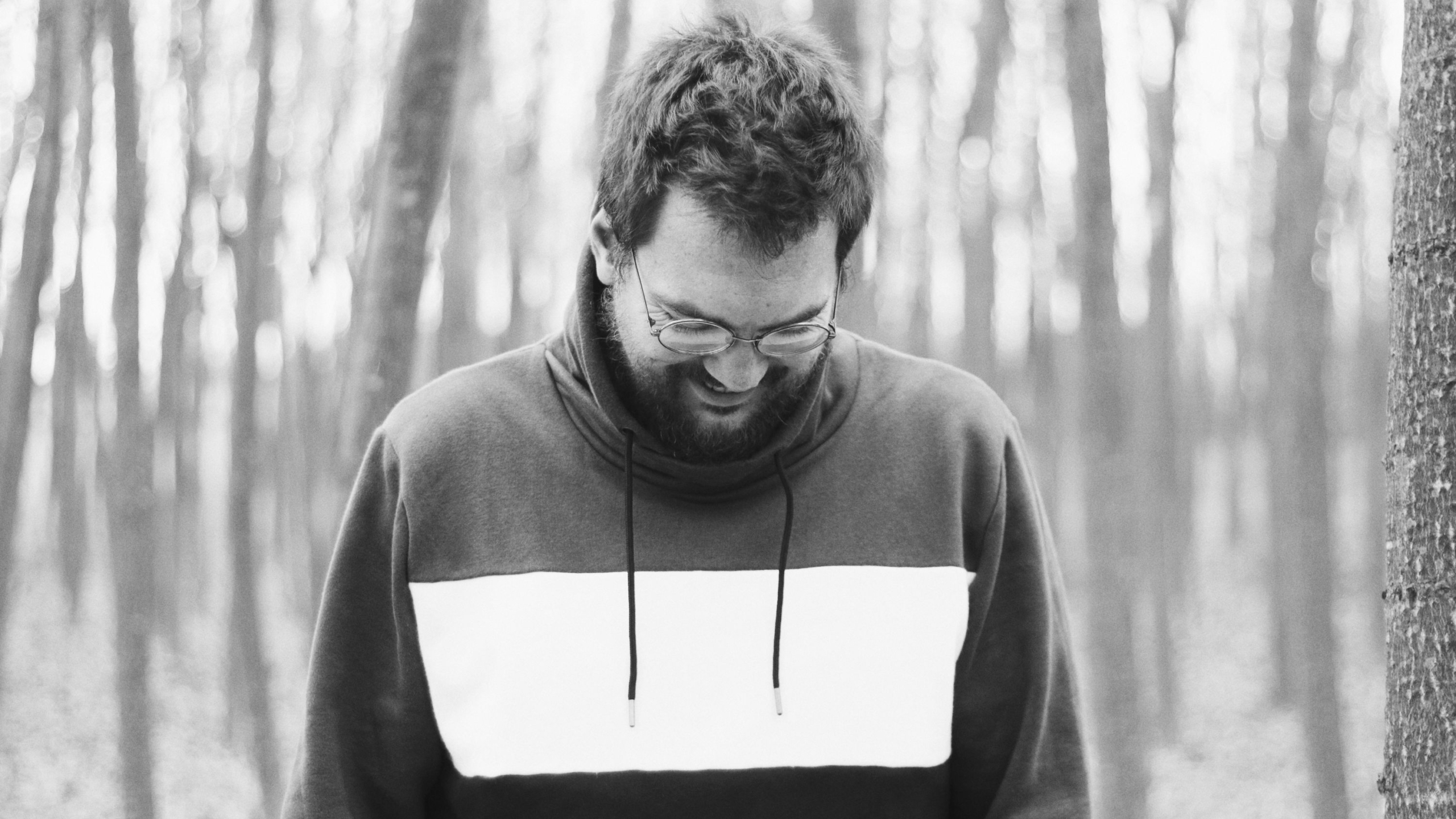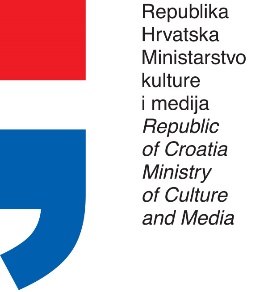On several occasions, we’ve written about the Yugoslav architectural legacy on the P-Portal. About art, buildings, monuments, authors… In recent years, they are attracting more and more attention in the world. From the famous exhibition at the Moma Museum in New York, to the videos of world-famous music stars. From the interests of the media, experts, researchers, photographers, to tourists. Some local communities in the former Yugoslavia are renovating those places, buildings, monuments, aware that they have something extremely valuable and significant in their surroundings. At the republic level, there is no official base to put this wealth under one roof. They exist in museum settings, exhibitions, individual research efforts, works of enthusiasts…
It simply sounds incredible that a foreigner, without any material benefit, guided by curiosity, pure enthusiasm, with so much love, made a base of monuments from the entire former Yugoslavia. Not just photographs, but real research, from the history of the place, the symbolism of the monument, the author, to the geographical map of the location.
„Photographs of these neglected yet highly modern and optimistic concrete megaliths instilled these ‘spomeniks’ with a deep sense of “mystery” for me, to the point where I wanted to learn more…Even my attempts to learn about them online in any sort of meaningful way yielded surprisingly little comprehensive information… Finally, in the spring of 2016, I was able to spend about a month and a half traveling across the former-Yugoslav region by bus, train and rental car to take in as much as I could about the spomeniks and to document and photograph as much as possible. It was an unbelievable adventure, as I learned a huge about not only about the spomeniks, but also an incredible amount about the history, people, culture and religion of the former-Yugoslavia… Upon returning home from my first journey, I began to use the information I had gathered to create the sort of online resource that I wish had existed for me the first time I went looking for information on this topic. I called this educational internet portal the “Spomenik Database”… my aim is to create the definitive destination on the internet to not only view photos of the anti-fascist monuments of the former-Yugoslavia, but I also aim for it to be a place to learn about their history, their meaning, their current condition and exactly how to find them.“
Donald Niebyl is a biologist, historian, researcher, writer, traveler, enthusiast, an exceptional man from Illinois in America. He is the author of the incredible project “Spomenik Database“, which is already a big hit in the world.
After years of research, thousands of kilometers, numerous financial costs, huge time you spend every day, updating this impressive collection, which does not even exist where it was created; What is it, that still gives you strength, energy, will and enthusiasm to work?
Well, I would say that what keeps me going most of all is the continual outpouring of support and thanks that I receive from people not only from the former Yugoslav region, but also people from all over the world. Just about every day I have people who contact me asking questions, sending words of support, asking for guidance in their own trips, asking for help with their own academic research, and wanting to know how they can help me in any way that they can. A huge amount of the more recent work that I have put together has been in large part helped by people continually sending me photos, tips, info, documents and other materials that they think might aid in my research. It is really a tremendous gesture that I never expected and it is a humbling act that pushes me to keep up my work and expand upon what I’ve already put together.
How much do regional countries recognize and value your work?
I would not say that the governments of any of the regional countries have ever extended to me any official recognition to the work that I have done. A number of national veterans groups have reached out to me on several occasions, as well as a number of museum institutions from across the region… but really, at the end of the day, it is not the governments who I am aiming my project towards in the first place. It is everyday people who I hope my project will connect with. That is why I make it as accessible as possible and advertisement free, not hindered by pay-walls or institutional access or hidden deep in some lofty academic journal, because, at the end of the day, it is my goal to share the work I have done with as many people as I can who might be interested in it. In the digital age we live in, information needs to be made as accessible and as easy to consume as possible.
What prejudices have you broken about the people in this area, how do you feel about them today?
When I started my project, I would not say that I had any prejudices at all, largely because I really did not know much about the former Yugoslav region or its history (it is not something taught in American schools, unfortunately). I truly started from scratch when I began all the way back in 2015. And from there, it was a long road of years of research, studying, traveling and investigating before I felt that I was coming anywhere even CLOSE to even a small tangible understanding about the region. Even today, it is an understanding that continues to evolve and grow, as not being from there, having any ‘total’ or ‘complete’ understanding will always be elusive and unattainable. I feel that as I travel across that region, every person I talk to gives me another thing to think about and another aspect to consider. Yet you are right that there are many prejudices in the West and I do everything I can to help dispel such ignorance as I talk to people about my work and about my time spent there. I can tell you without question that it will be a place I will continue to consistently visit for the rest of my life.
According to your sensibility, aesthetics, feelings, values, who are the most important authors?
That is a tough question, because I feel that any answer I could give would no doubt leave out countless important authors who it would be criminal to overlook or not mention when discussing the question of “importance”. All I will say is that my project has illuminated me to Yugoslav artists, sculptors, architects and other craftsmens who I would say are among the most important creative figures in 20th century art that I never would have known about if it were not for starting my project. The real crime is that so many of these creative figures are largely ignored and marginalized in Western surveys of 20th century world art, so I hope that my work is helping to give them the attention of a wide international audience that they deeply deserve.
What are you currently working on and how do you see your project in a couple of years?
As always, I am continually working on expanding my project forward with more monument articles, more author profiles, more mapped items, and more in depth research and analysis. I literally work on the project every day. Recently, I was contacted by a Croatian architecture student who is interested in helping me not only write some content, but also is interested in developing a native-language podcast that will work to reach out more people than I might be able to only having content in English. I think this is an exciting path because not only are podcasts a great way to communicate information to new audiences, but I am excited that Spomenik Database might be able to reach out to people who weren’t easily able to engage with my work before.
Why did the Yugoslav monumental architecture, created after the WWII, arouse so much attention in the world in recent years?
I think there are several reasons for this. Firstly, I think the universalist visual and symbolic language of the art itself unquestionably speaks to people in very deep ways… maybe even in ways that the people who see them don’t fully understand. All they know is that they seem something that they are inexplicably drawn to. These monuments were originally developed within Yugoslavia to speak to people of a wide range of different ethnic, religious and cultural backgrounds… thus, with the hyper-connected internet age we live in now, people from around the world are able to see them for the first time. As a result, the all-embracing language of these works end up connecting with people who they were never intended for in the first place. Furthermore, I think their messages of “brotherhood & unity’, of antifascism, of triumph over adversity, etc etc, are all ideas that deeply resound with many around the world today.
What problems did you encounter while traveling around the former Yugoslav republics?
Well, as far as problems, I had very few the majority of the time. However, I will say that navigating through certain rural regions of BiH can be quite difficult, as even Google hasn’t quite mapped the roads of that country yet. What looks like it should be a major highway looking at a map on Google can end up being a pot-hole ridden dirt road that stretches on like that for 50 kilometers. One time my SatNav sent me down a road that I thought was going to take me to the monument at Kozara, but really it sent me down a steep muddy valley and I got my car stuck after almost driving it off the road into the ravine. Thankfully a group of local youth were able to pull me out with their tractor! Also, when I was walking across a remote hillside on foot to a monument next to a monastery in a rural area of North Macedonia, I was attacked by a pack of herding dogs who thought I was going after their sheep. If it weren’t for being rescued by a monk who thought I was a pilgrim, I am sure things would have been much worse for me. But from then on I learned, when travelling in remote hillsides on foot, always carry a big stick!
What positive situations, of help, recognition of your work and in your work, do you single out?
There really have been so many people who have helped me during the long journey of my project, I would scarcely know where to even begin listing them. Really, it has come from people of every background. Firstly, official institutions have no doubt played a big part, such as the Museum of Applied Art in Belgrade, as well as academics at the region’s universities such as Vladana Putnik Prica and Andrew Lawler in Belgrade, Boris Trapara in Sarajevo or Vjeran Pavlokovic in Zagreb. Furthermore, many everyday enthusiasts have given great help to me as well, such as my friend Stefan Tonevski in Kumanovo or Sam Leijenhorst the Netherlands traveller. I could go on all day listing the countless people who have helped and lent assistance to my project, and to each of them I am so utterly grateful! Without the help of people from the region and beyond, the work I have done would not have been possible.
How much interest is there in something we could call “Monuments tourism”? What is its future and what does it lack in order to be permanent and sustainable?
I would say that the idea of tourism based around visitation to these monument sites of the former Yugoslavia is of very high interest. On social media, I have tens of thousands of people following my work, which is something I never could have imagined just a few years ago. Not only that, but I am constantly getting questions from people who want to travel to the region to encounter these sites for themselves. Numerous groups are already at work helping to develop touristic infrastructure around these monument sites, most notably the “Balkan Monument Trail” project, funded by the European Union. I think the future of continued and growing international interest in these sites is unquestionable and something that will happen whether the current governments of these countries cultivate this interest or not. Experiencing these monuments in the way in which I have is without a doubt the most influential experience of my life and many people who I’ve talked to who have taken similar journeys feel the same way. For international visitors to come to see, learn about and be educated by these sites from now into the future, I think greater cooperation is needed between countries to ensure these sites of great historical heritage continue to endure and be protected as a cultural resource for all to see.

